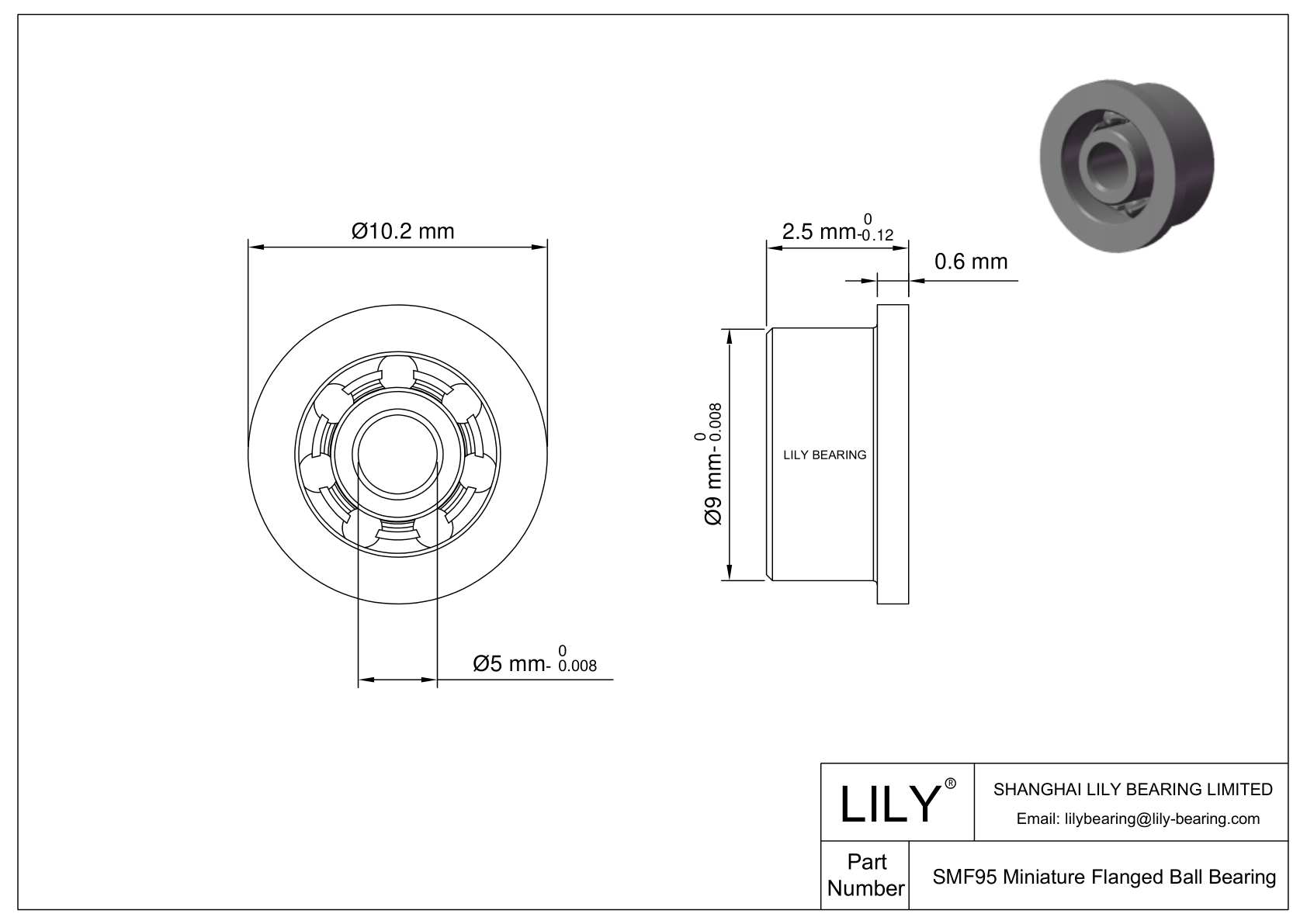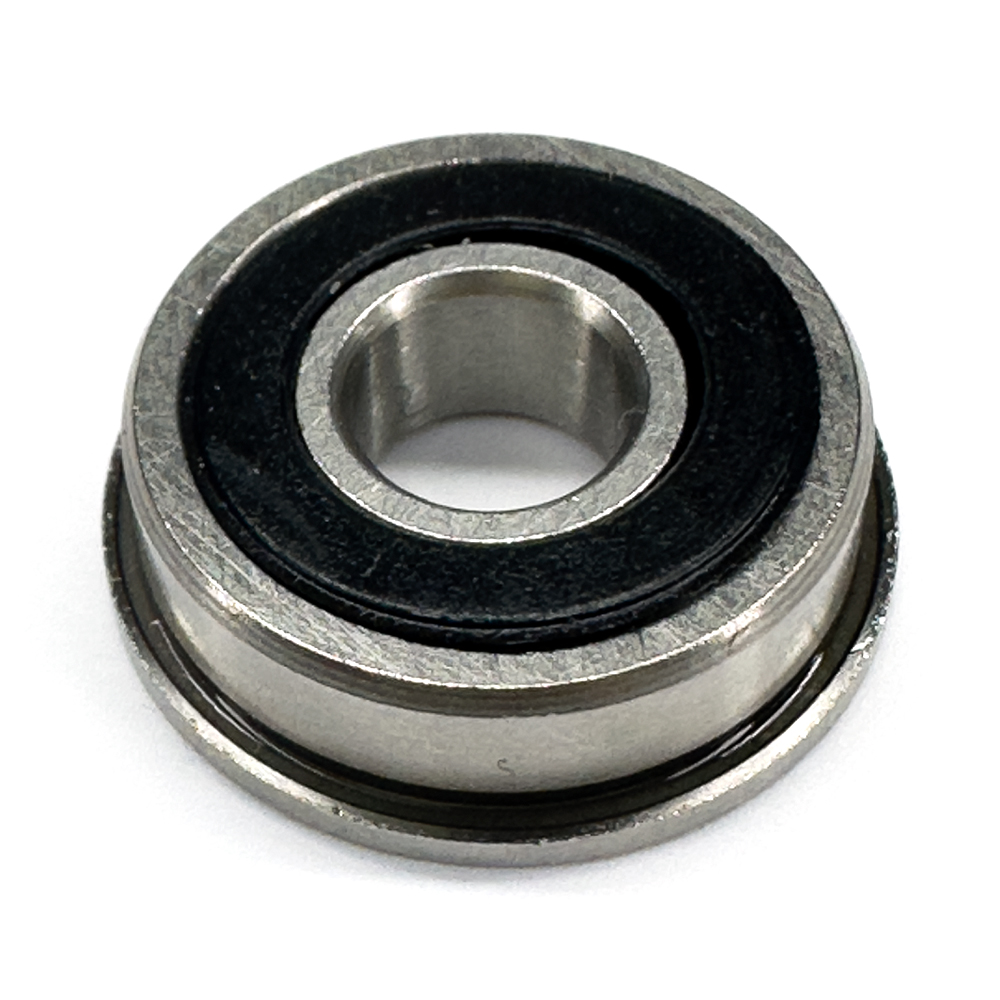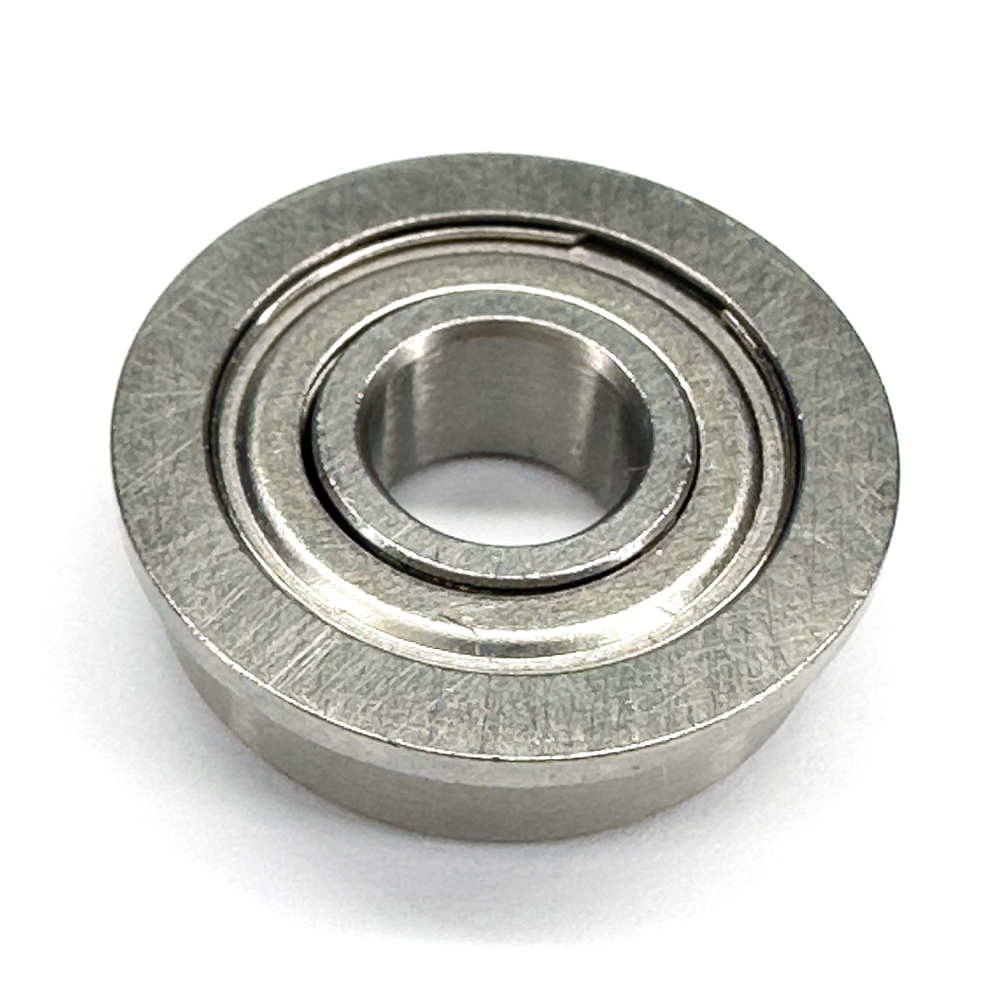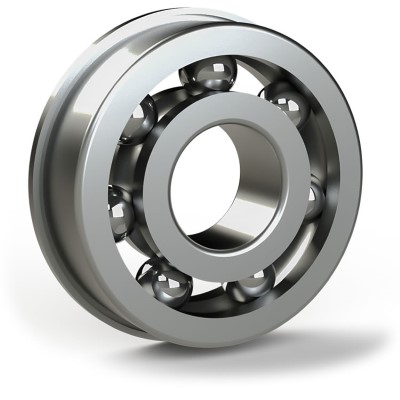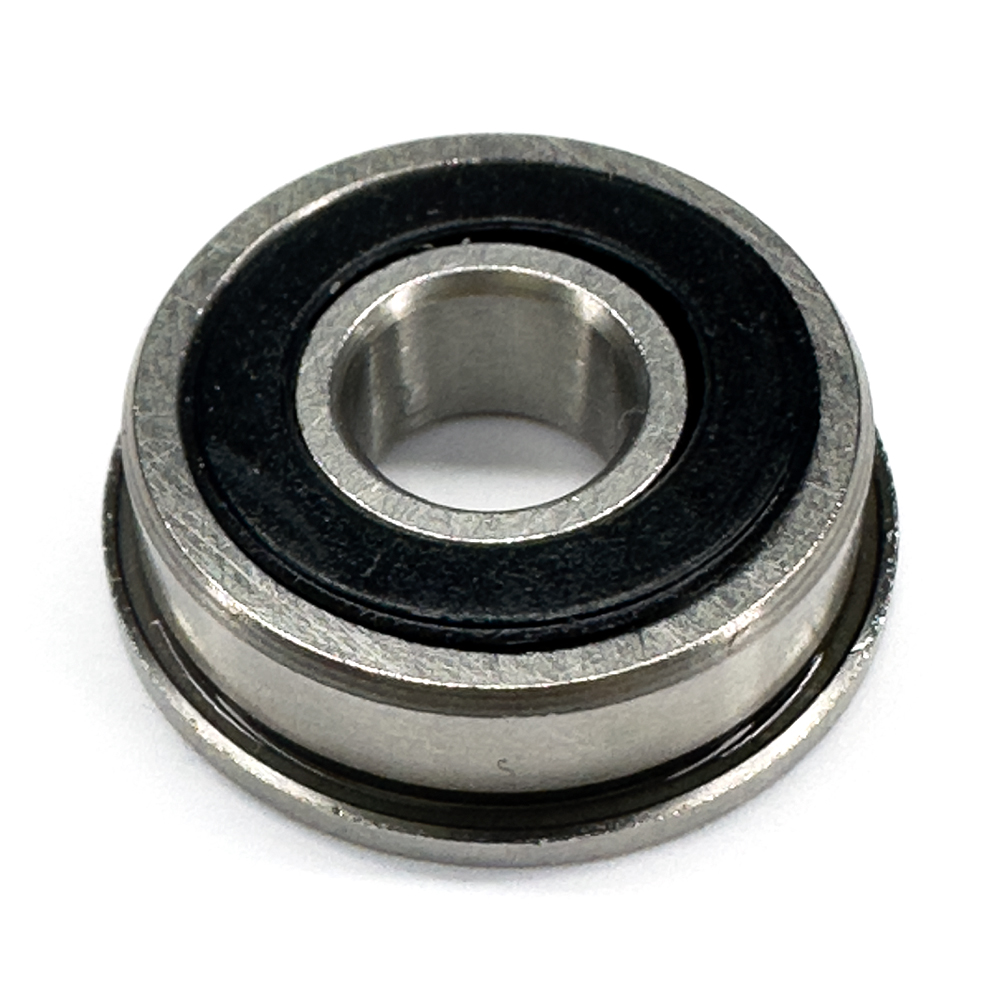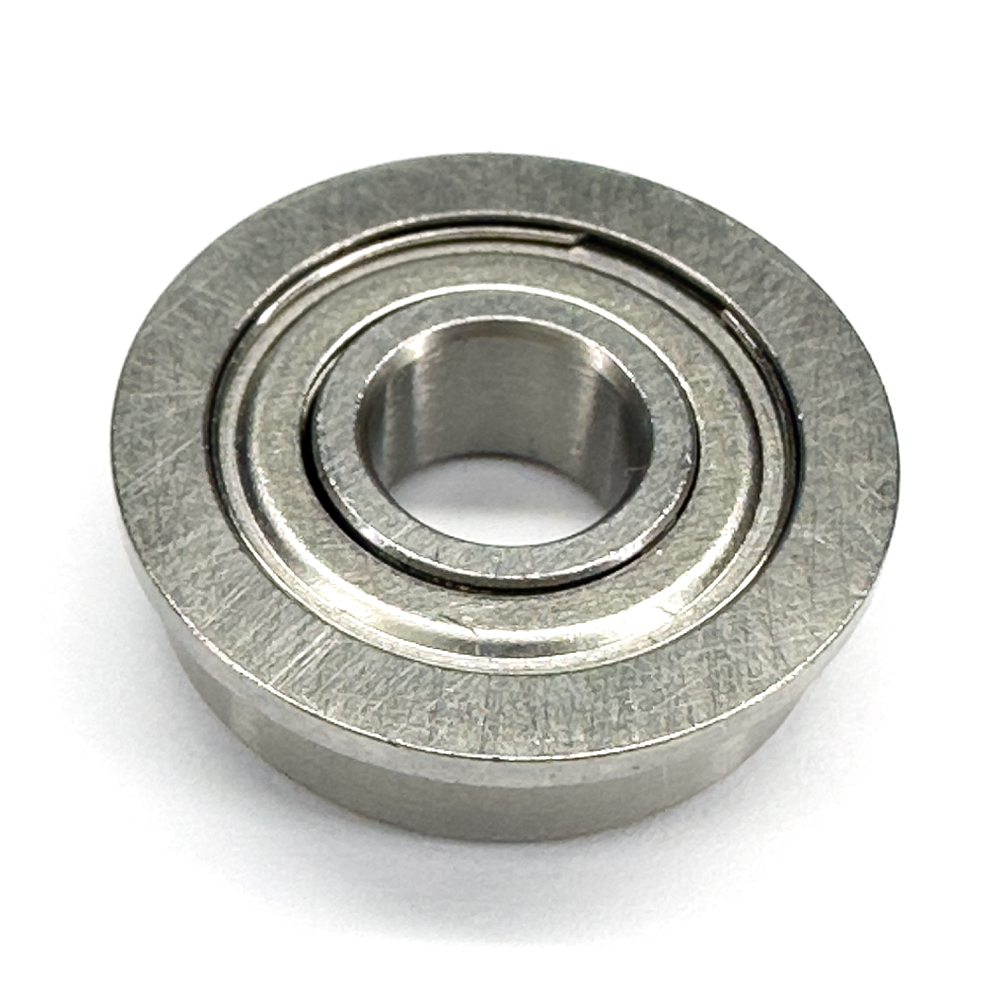

Sign in
New customer? Start here
Cancel
SMF95

Price $ 1.62
Number
| Part Number | SMF95 |
| System of Measurement | Metric |
| Bearing Type | Ball |
| For Load Direction | Radial |
| Construction | Single Row |
| Inner Ring Type | Standard |
| Seal Type | Open |
| Bore Dia | 5 mm |
| Bore Dia Tolerance | -0.008mm to 0 |
| Outer Dia | 9 mm |
| Outer Dia Tolerance | -0.008mm to 0 |
| Width | 2.5 mm |
| Width Tolerance | -0.12mm to 0 |
| Flange Outer Dia | 10.2 mm |
| Flange Thickness | 0.6 mm |
| Ring Material | Stainless Steel |
| Ball Material | Stainless Steel |
| Cage Material | Stainless Steel |
| Dynamic Radial Load | 74 lbf |
| Static Radial Load | 27 lbf |
| Max Speed (X1000 rpm) | 45 |
| Lubrication | Required |
| Shaft Mount Type | Press Fit |
| Temperature Range | -30° to 110 °C |
| ABEC Rating | ABEC1 |
| Radial Clearance Trade No | MC3 |
| Radial Clearance | 0.002mm to 0.013mm |
| RoHS | Compliant |
| REACH | Compliant |
| Ball Dia | 1.2000 mm |
| Ball Qty | 8 |
| Weight | 0.62 g |
INTERCHANGE
The LILY Bearing part series SMF95 is a potential replacement for these common bearing part numbers.
LILY
NMB
DYNAROLL
EZO
NHBB
McMaster-Carr
LSMF95
DDLF-950
SMF95
SMF95
SSLF-950
57155K458
Design Features of SMF95 Bearing
SMF95 Bearing is designed to effectively handle radial loads, provide precise alignment and facilitate easy mounting in applications where axial positioning is essential. SMF95 bore dia is 5 mm. Its out dia is 9 mm. SMF95 flange outer dia is 10.2 mm and its flange thickness is 0.6 mm. Its robust construction and flange design can offer reliable performance and extended service life.
What Benefits Can SMF95 Bearing Provide?
- Precise Axial Positioning: The integrated flange aids in securing the bearing axially, ensuring optimal alignment.
- Simplified Installation: The flange allows for easier bearing assembly and disassembly, reducing maintenance time.
- Enhanced Durability: This bearing typically has robust construction for prolonged service life, even in demanding applications.
- Reduced Friction: Their design aids in lowering friction, promoting energy efficiency.
What Can SMF95 Bearing Be Used for?
SMF95 Bearing is suitable for a wide range of applications due to their design and load handling capabilities, including:
- Automotive: used in assemblies like transmissions, steering mechanisms, and wheel hubs
- Industrial Machinery: such as conveyor systems, electric motors, and various mechanical handling systems
- Home Appliances: such as washing machines, air conditioners, and refrigerators
- Aerospace: used in aircraft control systems and satellite equipment
- Electronics: like hard drives and DVD players
- Robotics: used in robotic arms and automated machinery
Recommended Products


